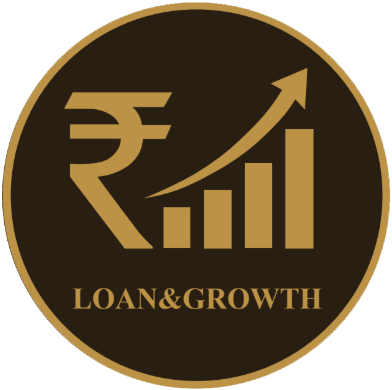We’ve all been there: a sudden medical bill, a long-overdue home repair, or the smart opportunity to pay off high-interest credit card debt. In these moments, the Personal Loan often shines brightly as a versatile financial solution. But just because you can get a personal loan for almost anything doesn’t mean you should.
- Introduction: Demystifying the Personal Loan
At Loan and Growth, we believe in using debt as a strategic tool for growth, not a band-aid for bad habits. This guide breaks down the personal loan into simple terms, helping you decide when to click “apply” and when to walk away.
Think of a personal loan as an all-purpose financial tool. Unlike a mortgage or a car loan (which is secured by the asset), most personal loans are unsecured. This means you don’t have to put up collateral like your home or car.
The key features are:
- Fixed Interest Rate: The rate stays the same for the life of the loan.
- Fixed Term: You know exactly when the loan will be fully paid off (e.g., 3 or 5 years).
- Installment Payments: You pay a predictable, fixed amount every month.
Its flexibility is its greatest strength—and its greatest danger.
2. When to USE a Personal Loan (Strategy for Growth)
A personal loan is a smart move when it helps you save money, increase your wealth, or manage a true emergency.
A. High-Interest Debt Consolidation
This is arguably the best use. If you’re juggling multiple high-interest credit cards with APRs of 20% or more, taking out a personal loan at a lower rate (say, 10-15%) lets you:
- Save Money: You pay significantly less total interest over time.
- Simplify Payments: One predictable monthly payment instead of many different bills.
B. Value-Adding Home Improvements
Planning a kitchen remodel or adding a new office space? If the renovation genuinely increases the value of your home (and you don’t qualify for a cheaper Home Equity Line of Credit, or HELOC), a personal loan can be a good option. You’re borrowing money to create a tangible asset.
C. Funding a True Emergency
Life happens—a sudden, critical medical expense or a necessary car repair. If your emergency fund falls short, a personal loan is often a far better option than predatory payday loans or maxing out credit cards, offering a much more manageable repayment structure.
3. When to SKIP a Personal Loan (Avoiding the Trap)
Using a loan to finance things that quickly lose value is a one-way ticket to debt regret.
A. Funding Wants, Not Needs
This is the most common mistake. Never use a personal loan for discretionary spending like a luxury vacation, an extravagant wedding, or a shopping spree. You don’t want to be making payments on a trip you took three years ago. If you can’t pay cash for it, you likely can’t afford it.
B. Covering Basic Living Expenses
If you’re struggling to pay rent, groceries, or utilities, a personal loan won’t fix the underlying problem; it will only push it back by a few months, adding interest to your crisis. This signals a need for a deeper financial restructuring, like budgeting or seeking debt counselling, not more debt.
C. Investing in Risky Ventures
Using borrowed money to invest in the stock market or a speculative business idea is extremely dangerous. You are guaranteeing a loss (the interest you pay) against a non-guaranteed gain. The risk is simply too high.
4. Key Takeaways and Actionable Steps
Before you apply for any loan, take these steps:
- Check Your Credit Score First: A strong credit score (generally above 700) is key to securing the lowest interest rates. Knowing your score gives you negotiating power.
- Calculate the Total Cost: Don’t just look at the monthly payment. Use an online calculator to determine the Total Interest Paid over the loan’s term. That number is your true cost.
- Shop Around: Different lenders (banks, credit unions, online lenders) offer vastly different rates and terms. Get pre-qualified with several to find the absolute best deal.
- Create a Repayment Plan: Build the new loan’s monthly EMI (Equated Monthly Installment) into your budget before you sign the papers. You must be 100% certain you can comfortably make every payment on time.
A personal loan, used wisely, can be a powerful catalyst for financial stability and growth. Used poorly, it becomes an unnecessary burden.
Don’t navigate this complex financial landscape alone. Whether you need help consolidating debt, planning for a major purchase, or just charting a path toward a better financial future, Loan and Growth is here. We offer one-stop financial solutions, tailored advice, and access to the best loan products that turn your debt into genuine financial growth.
Contact Loan and Growth today to find the smartest solution for your next financial goal!





